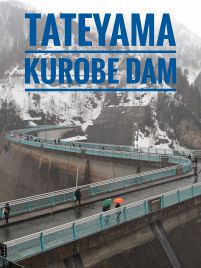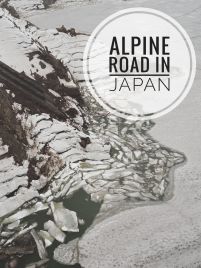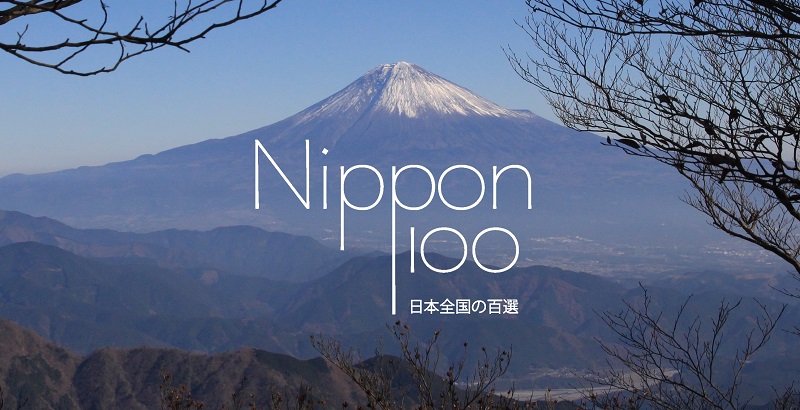Kurobe dam, the Japanese equivalent of Hoover dam – as the construction was also long and deadly – is an architectural achievement known all over the country. A convenient way to discover is to follow the Alpine Road, crossing the mountains between Ogizawa in Nagano prefecture to Tateyama in Toyama prefecture. Nippon100 did so in the middle of a snow storm.
Kurobe dam is the only Heisei landscape to be found in Toyama prefecture. As the Hida mountains are shared with Nagano and Gifu, and Gokayama is running along Shirakawa-go, also in Gifu. The place is not really famous among western travelers, but really popular among the closest neighbors of Japan, from Singapour or China mainly.
From Ogizawa to Tateyama, the dam is the first stop along the Japanese Alpine road, a succession of six different and impressive transportations through the mountains (including the famous sight of a common bus going in between huge snow walls).
The Kanden Tunnel Trolley bus – one of Japan only two trolleys (the other also to be find on the Road) – runs from Ogizawa to Kurobe through a tunnel dig for the conveyance of building materials for Japan’s highest dam. The construction was conducted from 1956 to 1963, and the digging was the longest and more difficult part – which claimed the life of 171 workers. The dam was built to provide electricity to the whole Kansai area.
Kurobe dam is Nippon100’s 9th described landscape.

 |
 |
 |
 |



 |
 |
 |
 |
This year, the Alpine Road opened the 15th of April. Before, as it is the case every winter, it was too snowy and cold to be passable. The most famous part is definitely the one we did not see because of the storm, when one can walk in between the 20m-high snow walls to catch the Tateyama Highland bus…
After walking across the dam, the Kurobe Cable Car allows to reach the intermediary station of Kurobedaira (1828m) from where the Tateyama ropeway leads to Daikanbo. The ropeway is famous for being the longest unsupported one in Japan. From Daikanbo, the view over the Japanese Alps and Kurobe lake should not be missed.


 |
 |



The Tateyama Tunnel Trolley bus – Japan’s other one – runs through Mount Tateyama. And the ones from each side intersect exactly straight down the summit. The trolleys reaches Murodo, the highest point on the Alpine road, 2450m, and thus the highest station of Japan. The step is also the widest, with more restaurants, an hotel, many hikking roads to enjoy around the surrounding mountains and even Japan highest onsen, Mikuriga Ike.
Murodo’s next is Bijodaira, almost 1500 meters down. This segment of the road is the longest – almost 50 minutes. From the Tateyama Highland Bus, it is possible to get a sight of Shomyo-daki, Japan’s highest all-year-round waterfalls (350m high). Directly next to them, Hannoki-no-taki are Japan highest seasonal waterfalls: 500m high, they are only observable when the snow melts.
 |
 |

 |
 |



 |
 |
The Tateyama Cable car is the last transportation (or the first if you choose to travel from Tateyama to Ogizawa), reaching Tateyama station. Restaurants, shops and toilets are logically to be found at every step on the Alpine Road. Traveling to it is a great 6-to-8 hours experience (8290 yens one way).

How to get there?
For Kurobe dam only, the easiest is to travel from Ogizawa, not far from Matsumoto or Nagano by bus (with a change at Shinano Omachi on JR Oito line). The same applies to travelers willing to go through the Road from Nagano prefecture, as we did. Yet many people chose to begin in Tateyama, one hour from Toyama (with the non-JR Toyama Chiho Railroad). And Toyama is easy to reach, being a Shinkansen stop in between Tokyo and Kanazawa.





